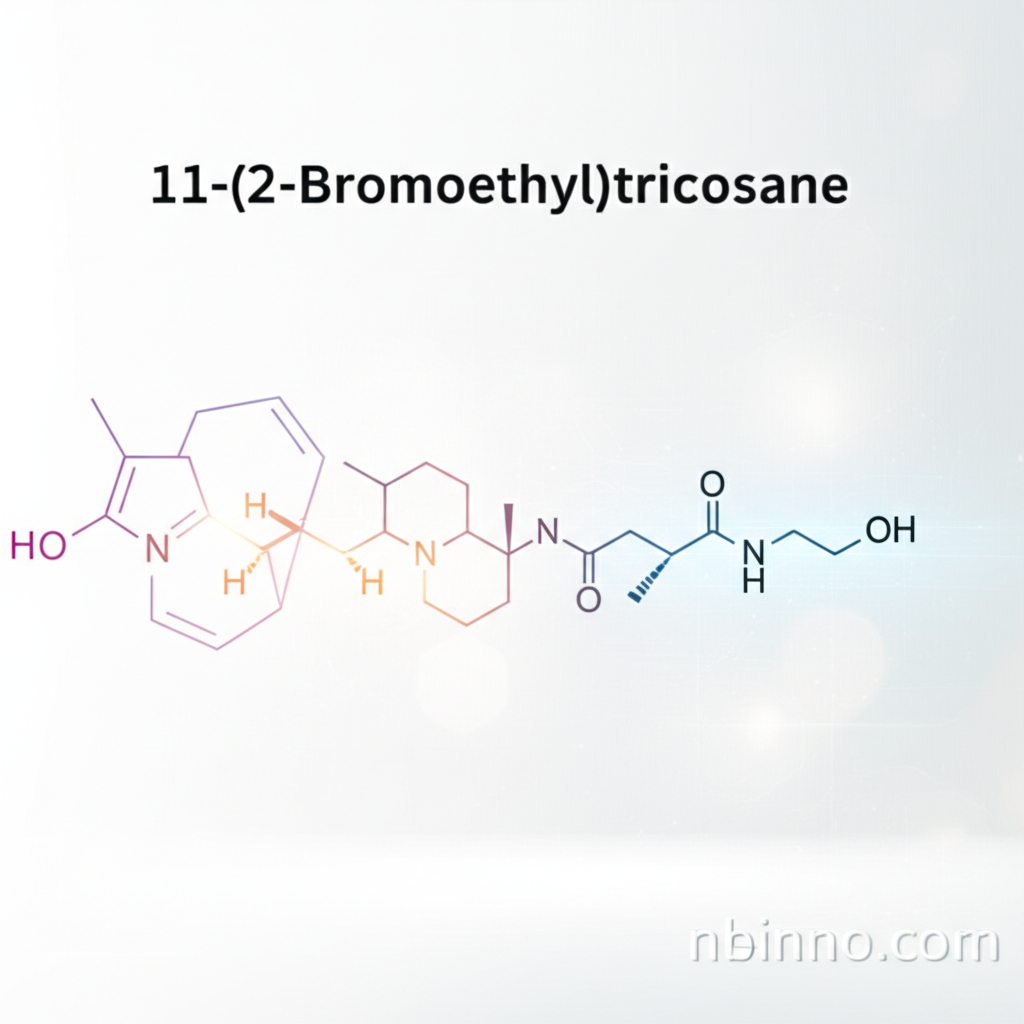11-(2-Bromoethyl)tricosane: Synthesis, Properties, and Applications in Specialty Chemicals
Explore the key features and uses of 11-(2-bromoethyl)tricosane, a valuable compound in organic synthesis.
Get a Quote & SampleProduct Core Value

11-(2-Bromoethyl)tricosane
11-(2-bromoethyl)tricosane, identified by its CAS number 1661914-65-3, is a significant specialty chemical intermediate. Its molecular structure, C25H51Br, and molecular weight of 431.58 make it a versatile building block in various chemical synthesis pathways.
- Discover the utility of CAS 1661914-65-3 in complex organic synthesis pathways. This compound serves as a crucial link in creating advanced molecular structures.
- Leverage the properties of C25H51Br for your chemical research needs. Its unique composition offers specific reactivity profiles essential for targeted applications.
- Source high-quality 11-(2-bromoethyl)tricosane from reliable chemical suppliers. Ensuring purity and consistency is paramount for successful research and development outcomes.
- Understand the role of this chemical intermediate in the broader landscape of specialty chemicals. Its applications extend to niche areas requiring precise molecular engineering.
Key Advantages Offered
Versatile Synthetic Building Block
As a key chemical intermediate, 11-(2-bromoethyl)tricosane facilitates the construction of complex organic molecules, making it invaluable for researchers in various fields.
Precise Molecular Structure
The well-defined molecular formula (C25H51Br) of this compound ensures predictable reactivity and performance in demanding organic synthesis processes.
Reliable Sourcing for R&D
Accessing 11-(2-bromoethyl)tricosane CAS 1661914-65-3 from reputable sources guarantees the quality and consistency required for critical research and development projects.
Key Applications
Organic Synthesis
Utilize 11-(2-bromoethyl)tricosane as a fundamental component in intricate organic synthesis procedures, enabling the creation of novel compounds.
Specialty Chemical Manufacturing
This compound plays a vital role in the production of various specialty chemicals, contributing to advancements in material science and other high-tech industries.
Research and Development
Researchers rely on the availability of precise chemical intermediates like C25H51Br to explore new chemical reactions and develop innovative products.
Material Science Precursors
The unique structure of 11-(2-bromoethyl)tricosane suggests potential applications as a precursor in the development of advanced materials with tailored properties.
